Chest physiotherapy for pneumonia in adults
- PMID: 36066373
- PMCID: PMC9447368
- DOI: 10.1002/14651858.CD006338.pub4
Chest physiotherapy for pneumonia in adults
Abstract
Background: Despite conflicting evidence, chest physiotherapy has been widely used as an adjunctive treatment for adults with pneumonia. This is an update of a review first published in 2010 and updated in 2013.
Objectives: To assess the effectiveness and safety of chest physiotherapy for pneumonia in adults.
Search methods: We updated our searches in the following databases to May 2022: the Cochrane Central Register of Controlled Trials (CENTRAL) via OvidSP, MEDLINE via OvidSP (from 1966), Embase via embase.com (from 1974), Physiotherapy Evidence Database (PEDro) (from 1929), CINAHL via EBSCO (from 2009), and the Chinese Biomedical Literature Database (CBM) (from 1978).
Selection criteria: Randomised controlled trials (RCTs) and quasi-RCTs assessing the efficacy of chest physiotherapy for treating pneumonia in adults.
Data collection and analysis: We used standard methodological procedures expected by Cochrane.
Main results: We included two new trials in this update (540 participants), for a total of eight RCTs (974 participants). Four RCTs were conducted in the United States, two in Sweden, one in China, and one in the United Kingdom. The studies looked at five types of chest physiotherapy: conventional chest physiotherapy; osteopathic manipulative treatment (OMT, which includes paraspinal inhibition, rib raising, and myofascial release); active cycle of breathing techniques (which includes active breathing control, thoracic expansion exercises, and forced expiration techniques); positive expiratory pressure; and high-frequency chest wall oscillation. We assessed four trials as at unclear risk of bias and four trials as at high risk of bias. Conventional chest physiotherapy (versus no physiotherapy) may have little to no effect on improving mortality, but the certainty of evidence is very low (risk ratio (RR) 1.03, 95% confidence interval (CI) 0.15 to 7.13; 2 trials, 225 participants; I² = 0%). OMT (versus placebo) may have little to no effect on improving mortality, but the certainty of evidence is very low (RR 0.43, 95% CI 0.12 to 1.50; 3 trials, 327 participants; I² = 0%). Similarly, high-frequency chest wall oscillation (versus no physiotherapy) may also have little to no effect on improving mortality, but the certainty of evidence is very low (RR 0.75, 95% CI 0.17 to 3.29; 1 trial, 286 participants). Conventional chest physiotherapy (versus no physiotherapy) may have little to no effect on improving cure rate, but the certainty of evidence is very low (RR 0.93, 95% CI 0.56 to 1.55; 2 trials, 225 participants; I² = 85%). Active cycle of breathing techniques (versus no physiotherapy) may have little to no effect on improving cure rate, but the certainty of evidence is very low (RR 0.60, 95% CI 0.29 to 1.23; 1 trial, 32 participants). OMT (versus placebo) may improve cure rate, but the certainty of evidence is very low (RR 1.59, 95% CI 1.01 to 2.51; 2 trials, 79 participants; I² = 0%). OMT (versus placebo) may have little to no effect on mean duration of hospital stay, but the certainty of evidence is very low (mean difference (MD) -1.08 days, 95% CI -2.39 to 0.23; 3 trials, 333 participants; I² = 50%). Conventional chest physiotherapy (versus no physiotherapy, MD 0.7 days, 95% CI -1.39 to 2.79; 1 trial, 54 participants) and active cycle of breathing techniques (versus no physiotherapy, MD 1.4 days, 95% CI -0.69 to 3.49; 1 trial, 32 participants) may also have little to no effect on duration of hospital stay, but the certainty of evidence is very low. Positive expiratory pressure (versus no physiotherapy) may reduce the mean duration of hospital stay by 1.4 days, but the certainty of evidence is very low (MD -1.4 days, 95% CI -2.77 to -0.03; 1 trial, 98 participants). Positive expiratory pressure (versus no physiotherapy) may reduce the duration of fever by 0.7 days, but the certainty of evidence is very low (MD -0.7 days, 95% CI -1.36 to -0.04; 1 trial, 98 participants). Conventional chest physiotherapy (versus no physiotherapy, MD 0.4 days, 95% CI -1.01 to 1.81; 1 trial, 54 participants) and OMT (versus placebo, MD 0.6 days, 95% CI -1.60 to 2.80; 1 trial, 21 participants) may have little to no effect on duration of fever, but the certainty of evidence is very low. OMT (versus placebo) may have little to no effect on the mean duration of total antibiotic therapy, but the certainty of evidence is very low (MD -1.07 days, 95% CI -2.37 to 0.23; 3 trials, 333 participants; I² = 61%). Active cycle of breathing techniques (versus no physiotherapy) may have little to no effect on duration of total antibiotic therapy, but the certainty of evidence is very low (MD 0.2 days, 95% CI -4.39 to 4.69; 1 trial, 32 participants). High-frequency chest wall oscillation plus fibrobronchoscope alveolar lavage (versus fibrobronchoscope alveolar lavage alone) may reduce the MD of intensive care unit (ICU) stay by 3.8 days (MD -3.8 days, 95% CI -5.00 to -2.60; 1 trial, 286 participants) and the MD of mechanical ventilation by three days (MD -3 days, 95% CI -3.68 to -2.32; 1 trial, 286 participants), but the certainty of evidence is very low. One trial reported transient muscle tenderness emerging after OMT in two participants. In another trial, three serious adverse events led to early withdrawal after OMT. One trial reported no adverse events after positive expiratory pressure treatment. Limitations of this review were the small sample size and unclear or high risk of bias of the included trials.
Authors' conclusions: The inclusion of two new trials in this update did not change the main conclusions of the original review. The current evidence is very uncertain about the effect of chest physiotherapy on improving mortality and cure rate in adults with pneumonia. Some physiotherapies may slightly shorten hospital stays, fever duration, and ICU stays, as well as mechanical ventilation. However, all of these findings are based on very low certainty evidence and need to be further validated.
Trial registration: ClinicalTrials.gov NCT05007457.
Copyright © 2022 The Cochrane Collaboration. Published by John Wiley & Sons, Ltd.
Conflict of interest statement
Xiaomei Chen: declares that they have no conflict of interest. Jiaojiao Jiang: declares that they have no conflict of interest. Renjie Wang: declares that they have no conflict of interest. Hongbo Fu: declares that they have no conflict of interest. Jing Lu: declares that they have no conflict of interest. Ming Yang: declares that they have no conflict of interest.
Figures

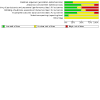
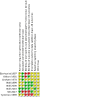
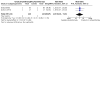
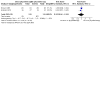
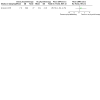

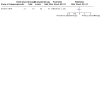
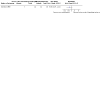
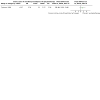
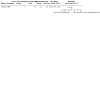
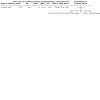

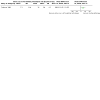

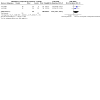
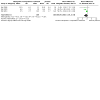
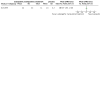
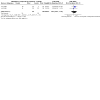

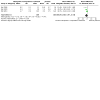
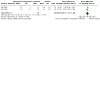
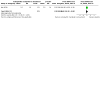
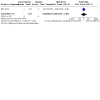

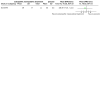

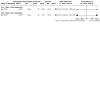
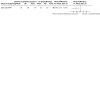
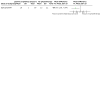

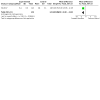
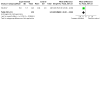
Update of
-
Chest physiotherapy for pneumonia in adults.Cochrane Database Syst Rev. 2013 Feb 28;(2):CD006338. doi: 10.1002/14651858.CD006338.pub3. Cochrane Database Syst Rev. 2013. Update in: Cochrane Database Syst Rev. 2022 Sep 6;9:CD006338. doi: 10.1002/14651858.CD006338.pub4. PMID: 23450568 Updated.
References
References to studies included in this review
Bjorkqvist 1997 {published data only}
Britton 1985 {published data only}
-
- Britton S, Beijstedt M, Wedin L. Respiratory gymnastics do not help in lung inflammation [Andningsgymnastik hjalper inte vid lunginflammation]. Lakartidningen 1983;80(47):4553-6. [PMID: ] - PubMed
-
- Britton S. Respiratory physiotherapy does not work in cases of primary pneumonia. Sjukgymnasten 1983;13:7-9.
Graham 1978 {published data only}
Noll 1999 {published data only}
Noll 2000 {published data only}
Noll 2010 {published data only}
-
- Noll DR, Degenhardt BF, Johnson JC. Multicenter osteopathic pneumonia study in the elderly: subgroup analysis on hospital length of stay, ventilator-dependent respiratory failure rate, and in-hospital mortality rate. Journal of the American Osteopathic Association 2016;116(9):574-87. [DOI: 10.7556/jaoa.2016.117] - DOI - PubMed
-
- Noll DR, Degenhardt BF, Morley TF, Blais FX, Hortos KA, Hensel K, et al. Efficacy of osteopathic manipulation as an adjunctive treatment for hospitalized patients with pneumonia: a randomized controlled trial. Osteopathic Medicine & Primary Care 2010;19(4):2. [DOI: 10.1186/1750-4732-4-2] - DOI - PMC - PubMed
Shi 2017 {published data only}
-
- Shi Z, Qin Y, Zhu Y, Pan X, Zhou X, Tan Y, et al. Effect of bronchoalveolar lavage with fiberoptic bronchoscopy combined with vibration sputum drainage on mechanically ventilated patients with severe pneumonia: a prospective randomized controlled trial in 286 patients. Zhonghua Wei Zhong Bing Ji Jiu Yi Xue 2017;29(1):66-70. [DOI: 10.3760/cma.j.issn.2095-4352.2017.01.014] - DOI - PubMed
Tydeman 1989 {published data only}
-
- Tydeman D. An investigation into the effectiveness of physiotherapy in the treatment of patients with community-acquired pneumonia. Physiotherapy Theory and Practice 1989;5(2):75-81. [DOI: 10.3109/09593988909044416] - DOI
References to studies excluded from this review
Ahmed 2021 {published data only}
-
- Ahmed AT, Abou Galalah AA, Mahgoub AA, Mahram GS. Comparative study between noninvasive ventilation with continuous positive airway pressure mask versus stacked breathing on chest expansion and pulmonary function in patients with pneumonia. Anaesthesia, Pain and Intensive Care 2021;25(2):176-84. [DOI: 10.35975/APIC.V25I2.1470] - DOI
Barkov 1987 {published data only}
-
- Barkov VA, Komiachilova AS, Smirnova GI, Namestnikov VV, Rogozina TV. Treatment of abscessing pneumonia by using combination physiotherapy [Lechenie abstsediruiushchei pnevmonii s primeneniem fizioterapevticheskogo kompleksa]. Voprosy Kurortologii, Fizioterapii i Lechebnoi Fizicheskoi Kultury 1987;March-April(2):13-6. [PMID: ] - PubMed
Burioka 1998 {published data only}
Cao 2020 {published data only}
-
- Cao J, Li M, Li J, Xu J, Shi Z, Ti J, et al. Effect of fiberoptic bronchoscope combined with ambroxol alveolar lavage on the treatment of pulmonary atelectasis in severe pneumonia and its influences on systemic inflammatory response and respiratory mechanics. International Journal of Clinical and Experimental Medicine 2020;13(8):5901-7.
Cheng 2004 {published data only}
-
- Cheng D, Xu D. Sequential non-invasive following short-term invasive mechanical ventilation in elderly patients of severe pneumonia with acute respiratory failure. Clinical Medical Journal of China 2004;11(6):977-8.
Choi 2005 {published data only}
Confalonieri 1998a {published data only}
-
- Confalonieri M, Potena A, Carbone G. Randomised trial of non invasive positive pressure ventilation in severe community acquired pneumonia. European Respiratory Journal 1998;Suppl 28:128.
Confalonieri 1998b {published data only}
-
- Confalonieri M, Potena A, Gandola L. Randomised controlled study of noninvasive positive pressure ventilation in severe community acquired pneumonia. Preliminary results. American Journal of Respiratory and Critical Care Medicine 1998;157(Suppl 3):A224.
Dangour 2011 {published data only}
-
- Dangour AD, Albala C, Allen E, Grundy E, Walker DG, Aedo C, et al. Effect of a nutrition supplement and physical activity program on pneumonia and walking capacity in Chilean older people: a factorial cluster randomized trial. PLOS Medicine 2011;8(4):e1001023. [DOI: 10.1371/journal.pmed.1001023] - DOI - PMC - PubMed
Facto 1947 {published data only}
-
- Facto LL. The osteopathic treatment of lobar pneumonia. Journal of the American Osteopathic Association 1947;46:385-92. - PubMed
Fu 2005 {published data only}
-
- Fu R, Dong H, He Y. Vibratory sputum-ejection apparatus for respiratory diseases in elderly. China Medical Equipment 2005;2(6):35-6.
Holody 1981 {published data only}
Jolliet 2001 {published data only}
Jose 2016 {published data only}
Kuznetsov 1976 {published data only}
-
- Kuznetsov OF. Effectiveness of massage in complex treatment of chronic pneumonia [Effektivnost' massazha v kompleksnom lechenii bol'nykh khronicheskoi pnevmoniei]. Voprosy Kurortologii, Fizioterapii i Lechebnoi Fizicheskoi Kultury 1976;5:29-32. - PubMed
Kuznetsov 1980a {published data only}
-
- Kuznetsov OF, Lagutina TS. New massage method in the overall treatment of chronic pneumonia [Novaia metodika massazha v kompleksnom lechenii bol'nykh khronicheskoi pnevmoniei]. Voprosy Kurortologii, Fizioterapii i Lechebnoi Fizicheskoi Kultury 1980;3:13-7. - PubMed
Kuznetsov 1980b {published data only}
-
- Kuznetsov OF, Tsar'kova LN, Pokrovskaia EL, Iakubson IM. Effect of massage on the acid-base balance in chronic pneumonia [Vliianie massazha na kislotno-shchelochnoi balans u bol'nykh khronicheskoi pnevmoniei]. Voprosy Kurortologii, Fizioterapii i Lechebnoi Fizicheskoi Kultury 1980;5:15-20. - PubMed
Li 2005 {published data only}
-
- Li Z. The application research of NIPPV on serious pneumonia sufferers. Guangzhou Medical Journal 2005;36(5):56-7.
Lopez‐Lopez 2019 {published data only}
-
- Lopez-Lopez L, Torres-Sanchez I, Rodriguez-Torres J, Cabrera-Martos I, Ortiz-Rubio A, Valenza MC. Does adding an integrated physical therapy and neuromuscular electrical stimulation therapy to standard rehabilitation improve functional outcome in elderly patients with pneumonia? A randomised controlled trial. Clinical Rehabilitation 2019;33(11):1757-66. [DOI: 10.1177/0269215519859930] - DOI - PubMed
Martín‐Salvador 2016 {published data only}
-
- Martín-Salvador A, Colodro-Amores G, Torres-Sánchez I, Moreno-Ramírez MP, Cabrera-Martos I, Valenza MC. Physical therapy intervention during hospitalization in patients with acute exacerbation of chronic obstructive pulmonary disease and pneumonia: a randomized clinical trial. Medicina Clinica 2016;146(7):301-4. [DOI: 10.1016/j.medcli.2015.11.009] - DOI - PubMed
Mo 2004 {published data only}
-
- Mo K, Wang Z, Ning Z. Observation of efficacy in tracheobronchial clearance using G5 vibratory sputum-ejection apparatus in patients with lower respiratory tract infection. Anthology of Medicine 2004;23(6):764.
Patman 2009 {published data only}
Schultz 2006 {published data only}
-
- Schultz K, Bergmann KC, Kenn K, Petro W, Heitmann RH, Fischer R, et al. Effectiveness of inpatient pulmonary rehabilitation (AHB). Results of a multicenter prospective observation study [Effektivitat der pneumologischen Anschluss-Rehabilitation (AHB). Ergebnisse einer multizentrischen prospektiven Beobachtungsstudie]. Deutsche Medizinische Wochenschrift 2006;131(33):1793-8. [DOI: 10.1055/s-2006-949155] - DOI - PubMed
Sedov 1975 {published data only}
-
- Sedov KR, Smol'kova OV. Value of therapeutic physical culture in the complex treatment of patients with chronic pneumonia [Znachenie lechebnoi fizkul'tury v kompleksnom lechenii bol'nykh khronicheskoi pnevmoniei]. Sovetskaia Meditsina 1975;1:65-70. - PubMed
Valenza 2016 {published data only}
-
- Valenza MC, Torres-Sanchez I, Del Corral Núñez-Flores T, De Aranda JA, Rios-Sanchez A, Torres JR. Effectiveness of a physical therapy intervention in patients hospitalized due to community acquired pneumonia. European Respiratory Journal 2016;48(Suppl 60):PA4424. [DOI: 10.1183/13993003.congress-2016.PA4424] - DOI
Vorob'ev 1984 {published data only}
-
- Vorob'ev LP, Busarova GA, Merzlikin LA, Shestakov VA. Effect of physiotherapy on the outcome of acute pneumonia [Vliianie fizioterapii na iskhody ostroi pnevmonii]. Voprosy Kurortologii, Fizioterapii i Lechebnoi Fizicheskoi Kultury 1984;2:13-6. - PubMed
Wan 2004 {published data only}
-
- Wan Y. Ultrasonic nebulization and postural drainage for lower respiratory tract infection. Modern Medicine & Health 2004;20(7):537-8.
Wang 1997 {published data only}
-
- Wang Y, Hua G, Li Q, Li D. Chirismus rehabilitation for lung infection. Chinese Journal of Rehabilitation Medicine 1997;12(2):85-8.
Wang 2020 {published data only}
Wu 2005a {published data only}
-
- Wu L, Yang J. Observation of efficacy in tracheobronchial clearance using vibratory sputum-ejection apparatus in the aged with lower respiratory tract infection. Heilongjiang Nursing Journal 2005;11(6):459-60. [DOI: 10.3760/cma.j.issn.1674-2907.2005.06.022] - DOI
Wu 2005b {published data only}
-
- Wu H. Chest physiotherapy for pulmonary infection. Guangxi Medical Journal 2005;27(10):1682-3.
Wu 2005c {published data only}
-
- Wu Z, Zeng L, Gao S. Evaluation of different sputum excretion methods in nursing of old patients with lung infection. Heilongjiang Nursing Journal 2005;11(3):167-8.
Xia 2005 {published data only}
-
- Xia X, Wang Y, Li Y, Tian J. Application of G5 vibratory sputum-ejection apparatus in patients with pulmonary infection. Tianjing Nursing 2005;13(5):296-7.
Xu 2004 {published data only}
-
- Xu L, Wang A, Lai G. Vibratory sputum-ejection apparatus for pulmonary infection. Journal of Fuzhou General Hospital 2004;11(49):11.
Xu 2021 {published data only}
-
- Xu Z, Chen J, Xu R. A randomised controlled study: efficacy of ICU nursing risk management combined with the cluster nursing model and its effect on quality of life and inflammatory factor levels of patients with acute respiratory distress syndrome and ventilator-associated pneumonia. Annals of Palliative Medicine 2021;10(7):7587-95. - PubMed
Zhang 2004 {published data only}
-
- Zhang A. Application of musculus diaphragm pacemaker expectoration in lung infection. Journal of Medical Forum 2004;25(2):13-5.
Zhao 2004 {published data only}
-
- Zhao B. Observation of efficacy of Chinese medicine nebulization and postural drainage for acute lung abscess. Practical Clinical Journal of Integrated Traditional Chinese and Western Medicine 2004;4(6):18-9.
References to ongoing studies
NCT05007457 {published data only}
-
- NCT05007457. The effectiveness of respiratory tele-rehabilitation after COVID-19 pneumonia related: a randomized controlled trial. clinicaltrials.gov/ct2/show/NCT05007457 (first received 16 August 2021).
Additional references
Britton 1983
-
- Britton S. Respiratory physiotherapy does not work in cases of primary pneumonia. Sjukgymnasten 1983;13:7-9.
Campbell 1975
Cao 2018
-
- Cao B, Huang Y, She D-Y, Cheng Q-J, Fan H, Tian X-L, et al. Diagnosis and treatment of community-acquired pneumonia in adults: 2016 clinical practice guidelines by the Chinese Thoracic Society, Chinese Medical Association. Clinical Respiratory Journal 2018;12(4):1320-60. [DOI: 10.1111/crj.12674] - DOI - PMC - PubMed
Chalumeau 2002
Chaves 2019
Chen 2018
Connors 1980
Ferreira‐Coimbra 2020
George 1995
-
- George RB, Light RW, Matthay MA, Matthay RA. Chest Medicine: Essentials of Pulmonary and Critical Care Medicine. 3rd edition. Baltimore: Williams & Wilkins, 1995.
GRADEpro GDT [Computer program]
-
- GRADEpro GDT. Version accessed 11 November 2021. Hamilton (ON): McMaster University (developed by Evidence Prime). Available at gradepro.org.
Guessous 2008
-
- Guessous I, Cornuz J, Stoianov R, Burnand B, Fitting JW, Yersin B, et al. Efficacy of clinical guideline implementation to improve the appropriateness of chest physiotherapy prescription among inpatients with community-acquired pneumonia. Respiratory Medicine 2008;102(9):1257-63. [DOI: 10.1016/j.rmed.2008.04.008] - DOI - PubMed
Guyatt 2008
-
- Guyatt GH, Oxman AD, Kunz R, Vist GE, Falck-Ytter Y, Schünemann HJ. What is “quality of evidence” and why is it important to clinicians? BMJ 2008;336(7651):995. [DOI: 10.1136/bmj.39490.551019.BE] - DOI - PMC - PubMed
Higgins 2021
-
- Higgins JP, Savović J, Page MJ, Elbers RG, Sterne JA. Chapter 8: Assessing risk of bias in a randomized trial. In: Higgins JP, Thomas J, Chandler J, Cumpston M, Li T, Page MJ, Welch VA, editor(s). Cochrane Handbook for Systematic Reviews of Interventions version 6.2 (updated February 2021). Cochrane, 2021. Available from training.cochrane.org/handbook/archive/v6.2.
Horiuchi 1997
ICH 1997
-
- International Conference on Harmonisation Expert Working Group. International conference on harmonisation of technical requirements for registration of pharmaceuticals for human use. In: ICH Harmonised Tripartite Guideline: Guideline for Good Clinical Practice. CFR & ICH Guidelines. Vol. 1. Barnett International/PAREXEL, 1997:1-59.
Jonas 2018
-
- Jonas C. Musculoskeletal therapies: osteopathic manipulative treatment. FP Essentials 2018;470:11-5. - PubMed
Kalil 2016
-
- Kalil AC, Metersky ML, Klompas M, Muscedere J, Sweeney DA, Palmer LB, et al. Executive summary: management of adults with hospital-acquired and ventilator-associated pneumonia: 2016 Clinical Practice Guidelines by the Infectious Diseases Society of America and the American Thoracic Society. Clinical Infectious Diseases 2016;63(5):575-82. [DOI: 10.1093/cid/ciw504] - DOI - PMC - PubMed
Lefebvre 2021
-
- Lefebvre C, Glanville J, Briscoe S, Littlewood A, Marshall C, Metzendorf M-I, et al. Chapter 4: Searching for and selecting studies. In: Higgins JP, Thomas J, Chandler J, Cumpston M, Li T, Page MJ, Welch VA, editor(s). Cochrane Handbook for Systematic Reviews of Interventions version 6.2 (updated February 2021). Cochrane, 2021. Available from training.cochrane.org/handbook/archive/v6.2.
Lewis 2012
Lim 2009
Marques 2020
McIlwaine 2015
Metlay 2019
-
- Metlay JP, Waterer GW, Long AC, Anzueto A, Brozek J, Crothers K, et al. Diagnosis and treatment of adults with community-acquired pneumonia. An official clinical practice guideline of the American Thoracic Society and Infectious Diseases Society of America. American Journal of Respiratory and Critical Care Medicine 2019;200(7):e45-67. [DOI: 10.1164/rccm.201908-1581ST] - DOI - PMC - PubMed
Musher 2014
Nicolini 2013
Ntoumenopoulos 2002
Poelaert 1991
-
- Poelaert J, Lannoy B, Vogelaers D, Everaert J, Decruyenaere J, Capiau P, et al. Influence of chest physiotherapy on arterial oxygen saturation. Acta Anaesthesiologica Belgica 1991;42(3):165-70. - PubMed
Prina 2015
Review Manager 2020 [Computer program]
-
- Review Manager 5 (RevMan 5) . Version 5.4. Copenhagen: Nordic Cochrane Centre, The Cochrane Collaboration, 2020.
Roqué 2016
-
- Roqué i Figuls M, Giné-Garriga M, Granados Rugeles C, Perrotta C, Vilaró J. Chest physiotherapy for acute bronchiolitis in paediatric patients between 0 and 24 months old. Cochrane Database of Systematic Reviews 2016, Issue 2. Art. No: CD004873. [DOI: 10.1002/14651858.CD004873.pub5] - DOI - PMC - PubMed
Takayanagi 2006
-
- Takayanagi N, Hara K, Tokunaga D, Takaku Y, Minagawa S, Tsuchiya Y, et al. Etiology and outcome of community-acquired pneumonia in relation to age and severity in hospitalized adult patients. Nihon Kokyuki Gakkai Zasshi 2006;44(12):906-15. - PubMed
Tong 2018
Wallis 1999
Warnock 2015
Weissman 1991
Weissman 1993
Zhang 2018
References to other published versions of this review
Yang 2010
Publication types
MeSH terms
Substances
Associated data
LinkOut - more resources
Full Text Sources
Medical

